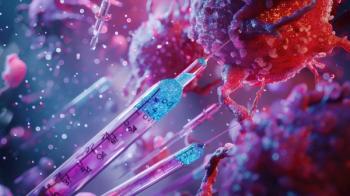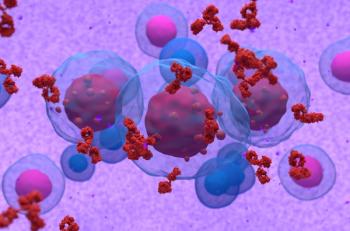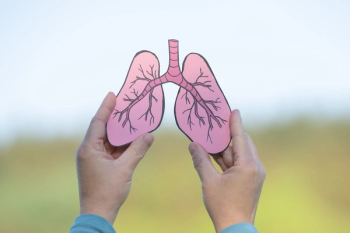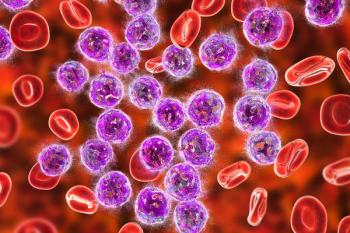
ENCORE Clinical Data Published in The Lancet Suggest Treatment with Oral Maintenance Therapy Effective in Previously Treated Gaucher Disease Patients
Treatment with Genzyme's Cerdelga® (eliglustat) capsules maintains hematological and organ volume stability in adults with Gaucher disease type 1 previously stabilized with intravenous enzyme replacement therapy.
PRESS RELEASE
CAMBRIDGE, Mass.--(
ENCORE is a randomized, multinational, Phase 3, open-label, non-inferiority study designed to determine whether patients with Gaucher disease type 1 who had been stabilized after 3 or more years of ERT infusions would remain stable after switching to Cerdelga, a novel, oral, selective inhibitor of glucosylceramide synthase. Eligible patients were randomized 2:1 to receive either oral Cerdelga (n=106) or ERT with Cerezyme® (imiglucerase) (n=53) over a period of 12 months.
The composite primary efficacy endpoint was the percentage of patients whose hematologic parameters and organ volumes remained stable, using the following stability criteria established for patients with Gaucher disease type 1 on maintenance therapy with Cerezyme:
- Hemoglobin concentration that did not decrease more than 1.5 g/dL
- Platelet count that did not decrease more than 25%
- Spleen volume that did not increase more than 25%
- Liver volume that did not increase more than 20%
After 12 months, 85% of patients receiving Cerdelga and 94% of patients receiving Cerezyme met the composite endpoint of stability in all four of these measures. The difference between the two treatments was within the pre-specified margins.
The principal secondary endpoints were stability with respect to the individual components of the primary endpoint. At least 93% of Cerdelga patients remained stable with respect to hemoglobin concentration, platelet count, spleen volume, and liver volume after 12 months of treatment.
Additional endpoints evaluated bone disease, Gaucher disease severity, quality-of-life and Gaucher-disease associated biomarkers. Baseline values for these measures reflected the clinical stability of this population, and no significant changes were seen after the switch to Cerdelga, with the exception of decreases in levels of the plasma biomarkers glucosylceramide and GM3. Given the mechanism of action of Cerdelga®, these were expected and all values remained within the healthy reference range.
A treatment preference survey done at the beginning of the trial found that 94% of patients in both treatment groups had a preference for oral treatment. After 12 months of treatment, all Cerdelga patients who responded to the survey (94%) confirmed this treatment preference, with the most frequent reasons cited being its convenience, capsule formation, availability at home and feeling better after treatment.
Most adverse events were non-serious and mild or moderate in severity. The most common side effects considered related to Cerdelga were diarrhea (5% of patients), arthralgia (4%), fatigue (4%) and headache (4%). Two Cerdelga patients and one Cerezyme patient (2% of each treatment arm) discontinued treatment. Discontinuations in the Cerdelga group were due to palpitations without clinically relevant ECG findings, deemed possibly treatment-related and myocardial infarction, deemed unrelated to treatment. The Cerezyme patient discontinued due to psychotic disorder, deemed unrelated to treatment.
“These findings extend the efficacy profile of Cerdelga beyond treatment-naïve adult patients with Gaucher disease type 1 to include maintenance therapy in individuals who have been stabilized on enzyme therapy,” said lead author Timothy M. Cox, Research Director & Professor of Medicine at the University of Cambridge.
In Gaucher disease type 1, a deficiency of lysosomal acid β-glucosidase leads to glucosylceramide accumulation in macrophages. This results in symptoms including hepatosplenomegaly, anemia, thrombocytopenia and skeletal disease.
Genzyme has been researching an oral therapy for Gaucher disease for 15 years, from early chemistry and preclinical research through clinical development. Cerdelga is a ceramide analog that works by partially inhibiting the enzyme UDP-glucosylceramide transferase, slowing the production of β-glucosylceramide, the substance that builds up in the lysosomes of affected patients. Patients with Gaucher disease type 1 retain residual acid β-glucosidase enzyme activity and Cerdelga aims to reduce the rate at which the lipid is made so that the residual function is able to clear the excess and re-establish a healthy equilibrium.
“These data suggest that Cerdelga is an effective, well-tolerated oral therapy that will provide Gaucher disease type 1 patients with a first-line treatment alternative to intravenous dosing,” said Genzyme’s Acting Head of Rare Diseases, Richard Peters MD, PhD. “Since we introduced the world’s first treatment for Gaucher disease type 1, Genzyme has remained committed to patients with this disease. Survey results indicate that many patients prefer an oral therapy and we are proud to provide another treatment option to the Gaucher community.”
Genzyme’s clinical development program for Cerdelga was the largest clinical program ever focused on Gaucher disease type 1 with approximately 400 patients treated in 30 countries. Recently, results from the ENGAGE study of Cerdelga in treatment-naïve patients
About Gaucher disease
Gaucher disease is an inherited condition affecting fewer than 10,000 people worldwide. People with Gaucher disease do not have enough of an enzyme, acid β-glucosidase that breaks down a certain type of fat molecule (glucosylceramide). As a result, lipid engorged cells (called Gaucher cells) amass in different parts of the body, primarily the spleen, liver, and bone marrow. Accumulation of Gaucher cells may cause spleen and liver enlargement, anemia, excessive bleeding and bruising, bone disease, and a number of other signs and symptoms. The most common form of Gaucher disease, type 1, generally does not affect the brain.
About Cerdelga®
Cerdelga® (eliglustat), a novel glucosylceramide analog given orally, was designed to partially inhibit the enzyme glucosylceramide synthase, which results in reduced production of glucosylceramide. Glucosylceramide is the substance that builds up in the cells and tissues of people with Gaucher disease. The concept was initially proposed by the late Norman Radin, PhD, from the University of Michigan. In pre-clinical studies, the precursor molecule, developed with James A. Shayman, MD, also from the University of Michigan, showed specificity for glucosylceramide synthase. Following Genzyme’s extensive compound optimization, pre-clinical and early clinical development program, Cerdelga was studied in the largest Phase 3 clinical program ever conducted in Gaucher disease, with approximately 400 patients treated in 30 countries.
On August 19, 2014, the U.S. Food and Drug Administration (FDA) approved Cerdelga (eliglustat) capsules, the only first-line oral therapy for certain adult Gaucher disease type 1 patients. The FDA approval was based on efficacy data from two positive Phase 3 studies for Cerdelga: one in patients new to therapy (ENGAGE), and the other in patients switching from approved enzyme replacement therapies (ENCORE). The filing also incorporated four years of efficacy data from the Cerdelga Phase 2 study.
The European Commission (EC) recently granted marketing authorization for Cerdelga, based on data from its clinical development program.
Newsletter
Stay informed on drug updates, treatment guidelines, and pharmacy practice trends—subscribe to Pharmacy Times for weekly clinical insights.
















































































































































































































